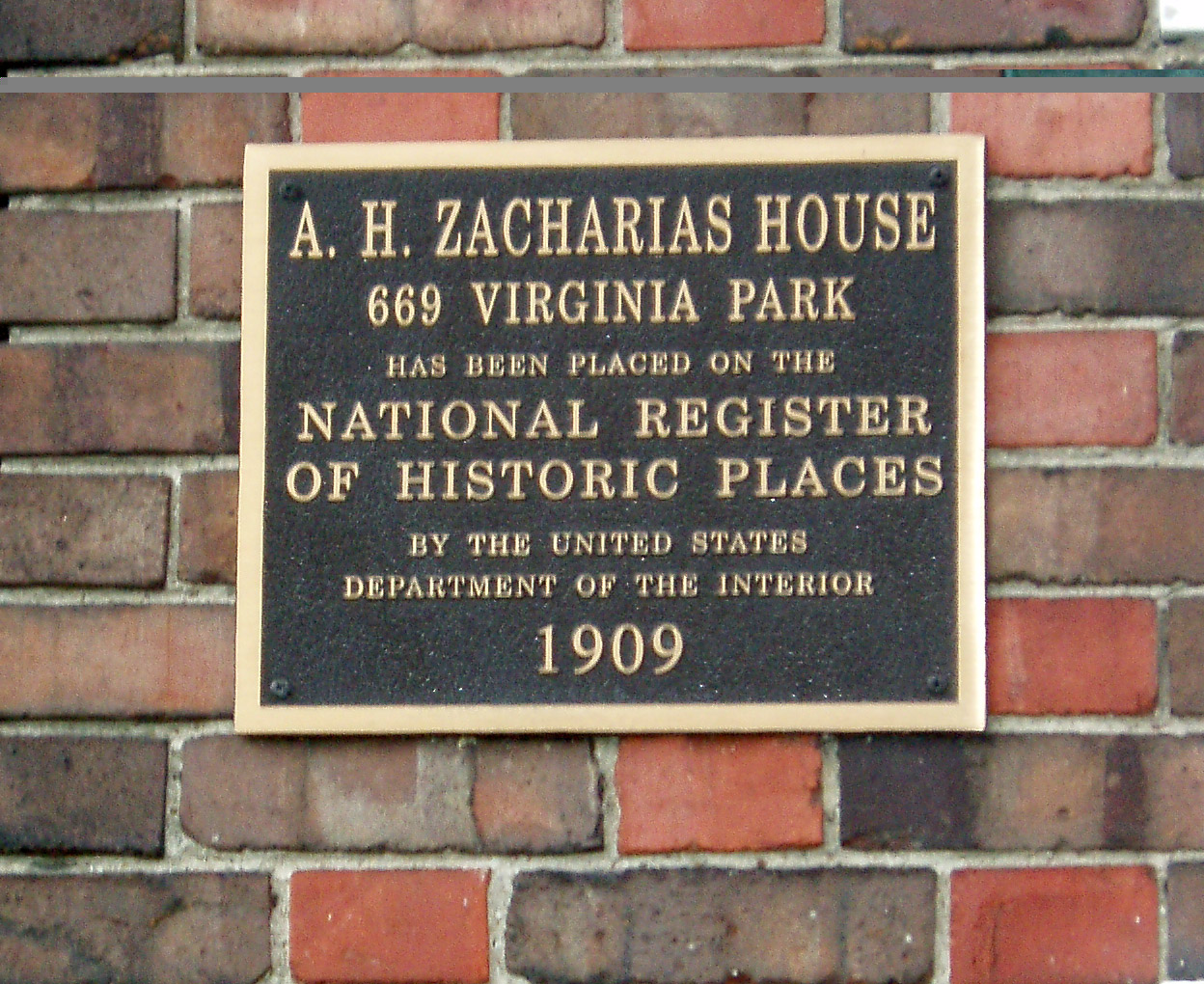

Allan Zacharias Home
669 Virginia Park
My knowledge of this attractive home is thin.
Peter Zacharias, born in Monroe County Michigan in 1847, attended schools
in this state and then briefly lived
in California. Similar to many other Michigan natives, he did not remain long
on the Pacific Rim. By 1880 or so, he entered the wholesale and retail coal
trade. Apparently he prospered so much that he purchased mines in southern
Ohio.
He often came to Detroit for his business and eventually decided to reside
here in a home in Virginia Park. I am not sure which residence was his,
but I believe
that it was on the same block as the residence you see. He also entered the
coal business in Detroit and, at one point in the early Twentieth Century,
apparently
owned more coal yards in the city than anybody else. Given that coal was the
primary source of energy for factories and homes, he had a large market for
his product. Peter Zacharias resided on Virginia Park until his death in
1922.
The home that you see, alas, is not the home of Peter Zacharias, but rather
that of his son, Allan, who was born in Ann Arbor in 1875. I infer that the
elder
Zacharias invested in residential properties in Detroit, so it is possible
that Peter Zacharias built this home. Or, perhaps, his son Allan built this
home.
I do not know anything about the career achievements of Allan Zacharias or
his family.
Virginia Park was a planned residential development for upscale homes chartered
in 1893. Most of the homes were completed by about 1912. The Allan Zacharias
residence is within the Virginia Park Historic
District that was listed with
the National Register of Historic Places on February 2, 1980. This historic district
includes both sides of Virginia Park from Woodward to the John Lodge Service
Drive. Virginia Park is also a City of Detroit Designated Historic District.
Henry Tudor defeated Richard III at the Battle of Bosworth Field in 1485, ending
the British civil war known as the War of the Roses. He had himself crowned
as Henry VII and ruled England until 1509 when his son—the more well-known
Henry VIII—became king. Tudor rule came to its end with the death of
Queen Elizabeth I in 1603 after her 45-year reign.
At the end of the Nineteenth Century and linked to the emerging Arts and Crafts
movement, a Tudor Revival style of architecture became briefly popular in the
United States and England. What was presumed to be Tudor-style architecture
was incorporated into plans for modest-sized buildings, including schools,
residences—often
called cottages—and chapels. The architects who designed homes in the
Tudor Revival style often used brick at the lower level, but for the upper
level they
used decorative timbering; that is, exposed wood with white plaster in between.
Roofs were typically steeply pitched and accompanied by prominent gables, often
cross gables. Cross gables means that one roof would include gables pointing
in opposite directions. Frequently, architects designed immense and visible
chimneys with large chimney pots.
The Zacharias home illustrates some of the elements commonly found in Tudor
Revival residences, but does not reveal exposed wood at the upper level. One
of the greatest
challenges for architects designing Tudor Revival home was to find wood that
would endure harsh weather conditions. Since the Zacharias home was designed
rather early in the Tudor Revival period, perhaps that problem had not been
solved. You see a very steeply pitched roof with cross gables and two large
and very
visible chimneys. Presumably, these were basically decorative, and a home built
by a coal merchant or by his son had a large coal stove in the basement. The
architect incorporated an appealing set of attractive arches for the entryway
and for windows at three levels. This is a carefully tended home with an exceptionally
well-groomed yard.
Architect: Unknown to me
Date of Construction: 1909
Architectural style: Several Tudor Revival components are shown.
Use in 2007: Residential
Photograph: Ren Farley
Preparation of description: February, 2007